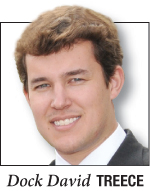Though it’s been the major topic of discussion in our articles and radio spots for the past several weeks, we feel obliged remind investors of the climb in stock prices that has led them back to pre-crash highs. Why do we feel obliged, curious readers may inquire? It’s simply because despite their recent success, which flies in the face of a pessimistic investing public and doomsday commentators, stocks continue their ascent.
Clearly the markets know something that neither media pundits nor the average investor do.
Time and again I’ve written that things are looking up for the U.S. economy, and therefore the markets as well. It seems futile at this point, but we’ll remind Glenn Beck yet again that the premises of his economic outlook are flawed. No, the dollar isn’t going to collapse; no, people aren’t going to be living on farms and forced to grow their own food; no, ammunition should not be the cornerstone in a successful retirement plan.
The future looks bright for the economy and the world’s financial markets, and that’s something we can all appreciate after the lost decade that we’ve just suffered. In fact, what we’re just now emerging from has truly been the perfect storm for baby boomer retirements.
For a strong example, look no further than the suffering of 401(k) plans.
Not many people understand that the 401(k) plan is relatively new. The idea emerged from a provision in Internal Revenue Code that came into being in 1978 — so 401(k)s are still in their infancy, and are continuing to evolve.
During the 34 year history of the 401(k), the U.S. stock market hasn’t really made any substantial gains for roughly 12 of those years. Of course, it also hasn’t helped that the evolution of such employer-sponsored plans has moved largely in the wrong direction.
The past 10-15 years have seen retirement plans limit investment options, mostly with broad blended funds as opposed to sector-focused investments. More recently, target date funds have become popular, although few people understand their inner workings. All of this has been done in an attempt to “dumb down” retirement plans for employees, but in the end all the padding has stunted investors’ account growth.
The last serious drawback, which is thankfully nearing an expedient correction, is the lack of transparency in employer-sponsored plans. Many employers have historically had no idea what they were truly paying for plans.
Now, due to a change in disclosure rules that takes effect this summer, many employers are just now finding out — and very few are happy. Most are realizing that they’ve been overpaying and that they’ve been getting terrible service considering the fees that are built into their plans.
For most plans, employees have been forced to deal with 800 numbers and automated answering systems. Sure, a company might get an annual checkup from a low-level “account executive,” but they aren’t meeting with anyone who can provide any real insight, much less any kind of read on where the economy is headed.
In other words, they’re never meeting with those actually responsible for managing their money, nor are they getting any information that can help them make decisions themselves. They are flying blind. And that’s why we produce our endless stream of columns, radio spots, TV interviews, podcasts and so on. Our firm manages money for both individual and institutional clients (like 401(k) plans), but for those who choose not to use us, we hope to at least provide some guidance on where the world is heading, so investors can make somewhat informed decisions on their own.
After all, that’s certainly more than they’ll get in an annual afternoon of glad-handing with a representative of their 401(k) provider.
Dock David Treece is a partner with Treece Investment Advisory Corp (www.TreeceInvestments.com) and is licensed with FINRA through Treece Financial Services Corp. He provides expert content to numerous media outlets. The above information is the express opinion of Dock David Treece and should not be construed as investment advice or used without outside verification.























